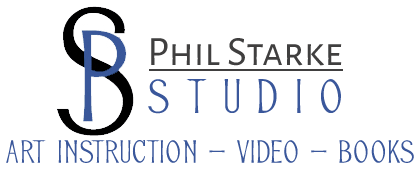About 1900, a group of Realist artists set themselves apart from and challenged the American Impressionists and academics. The most extensively trained member of this group was Robert Henri (1865–1929), who had studied at the Pennsylvania Academy of the Fine Arts from 1886 to 1888 under Thomas Anshutz (1851–1912). Anshutz had himself studied at the Pennsylvania Academy from 1876 to 1882 with Thomas Eakins, who had defied Victorian decorum in his teaching principles and in his boldly realistic paintings. After spending the years from 1888 to 1891 working at the Académie Julian in Paris, Henri taught at the School of Design for Women in Philadelphia and gave private art classes in and around that city and, during return visits to France, in and around Paris. Beginning in 1892, Henri also became the mentor to four Philadelphia illustrators—William Glackens (1870–1938), George Luks (1866–1933), Everett Shinn (1876–1953), and John Sloan (1871–1951)—who worked together at several local newspapers and gathered to study, share studios, and travel. Between late 1896 and 1904, they all moved to New York, where Henri himself settled in 1900.

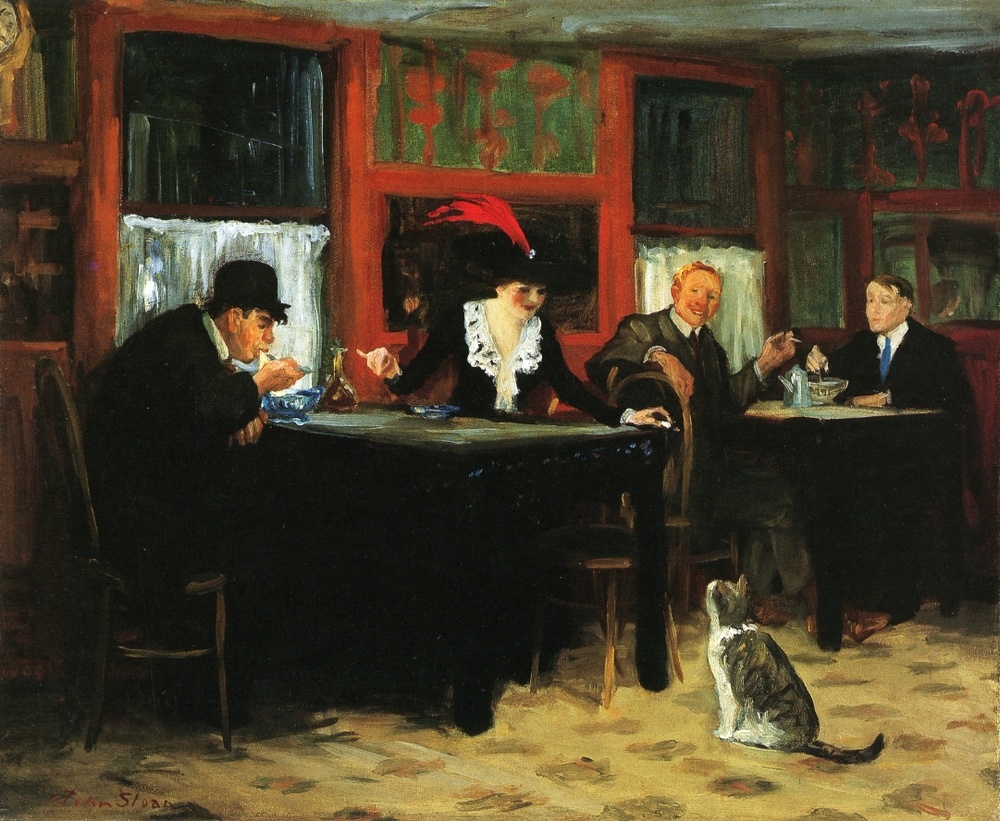
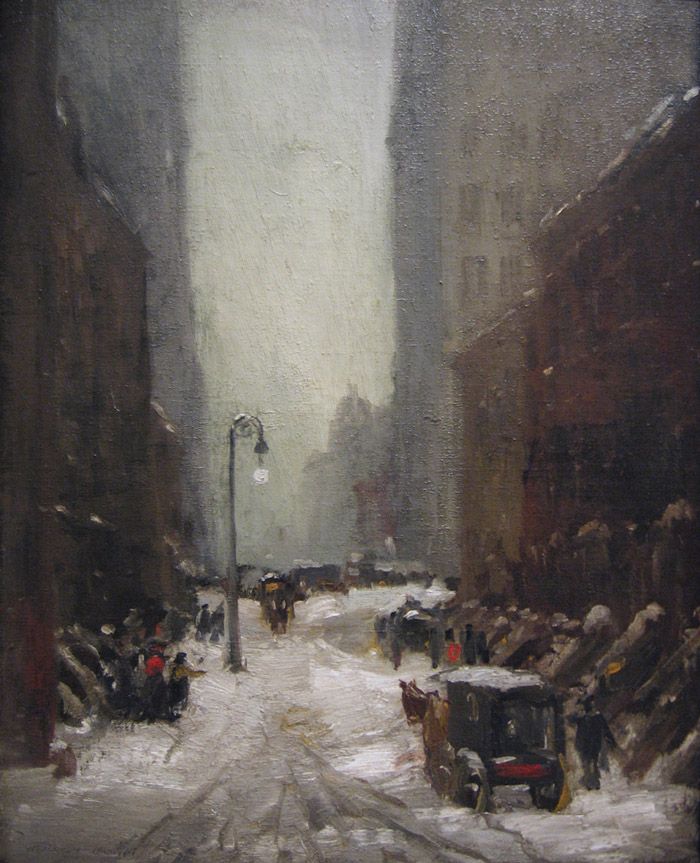
More...
Henri and his former-Philadelphia associates comprised the first generation of what came to be known as the Ashcan School. A second generation consisted of Henri’s New York students, of whom George Bellows (1882–1925) was the most devoted.
Although the Ashcan artists were not an organized “school” and espoused somewhat varied styles and subjects, they were all urban Realists who supported Henri’s credo—”art for life’s sake,” rather than “art for art’s sake.” They also presented their works in several important early twentieth-century New York exhibitions, including a group show at the National Arts Club in 1904; the landmark show of The Eight at Macbeth Galleries in February 1908, which included the five senior Ashcan School painters along with Ernest Lawson (1873–1939), Maurice Prendergast (1858–1924), and Arthur B. Davies (1862–1928); the Exhibition of Independent Artists in 1910; and the Armory Show—an immense display dominated by modern European art—in 1913.
In their paintings as in their illustrations, etchings, and lithographs, Henri and his fellow Ashcan artists concentrated on portraying New York’s vitality and recording its seamy side, keeping a keen eye on current events and their era’s social and political rhetoric. Stylistically, they depended upon the dark palette and gestural brushwork of Diego Velázquez, Frans Hals, Francisco de Goya, Honoré Daumier, and recent Realists such as Wilhelm Leibl, Édouard Manet, and Edgar Degas.
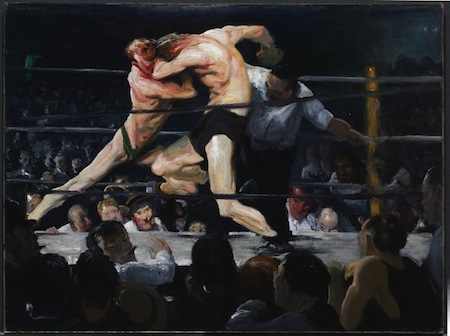
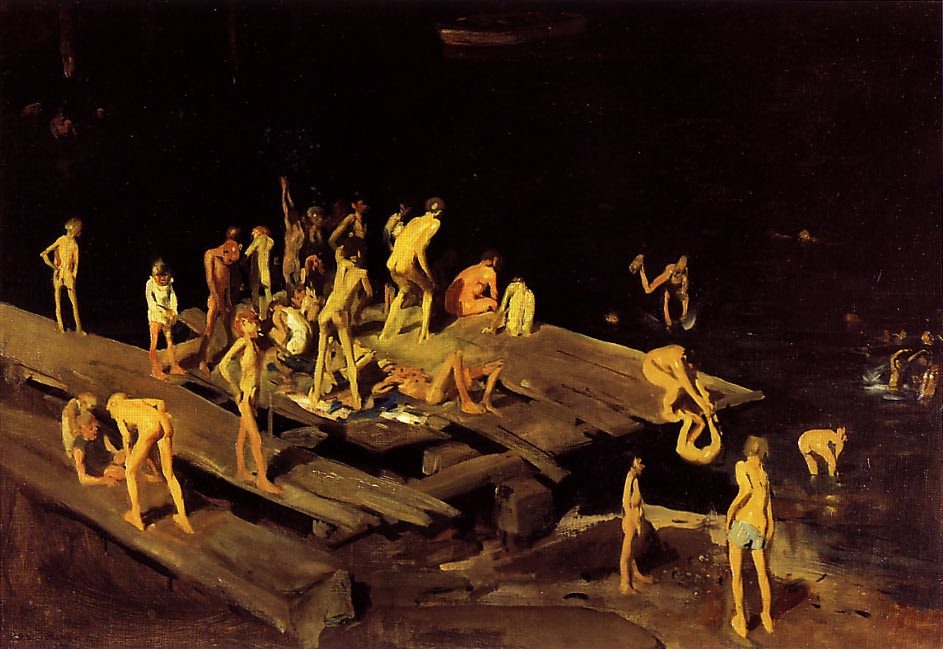
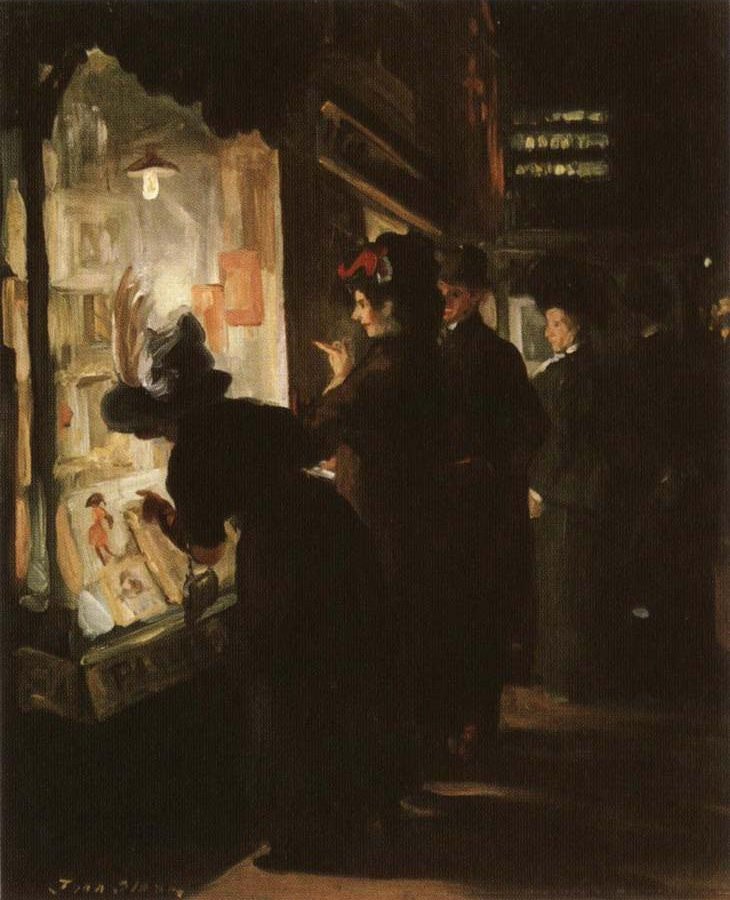
exc-5548fb36e4b01ecb63aecf5c
